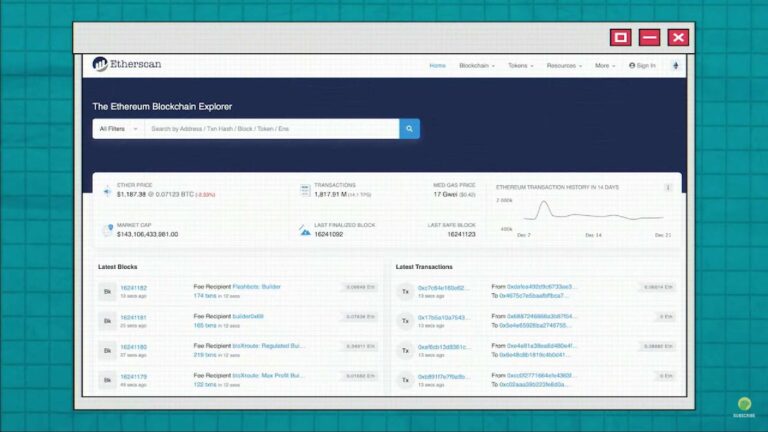The perennial query of when the entirety of the Bitcoin supply will be exhaustively mined has undoubtedly crossed the thoughts of many. Today, we embark on a journey to meticulously elucidate the precise duration required for the completion of Bitcoin mining.
Before delving into this intriguing subject, there are several pivotal chapters that necessitate exploration. First and foremost, we shall scrutinize the total supply of Bitcoin. Subsequently, we shall delve into the halving mechanism, a brilliant invention attributed to none other than Satoshi Nakamoto himself. Only after comprehending these fundamental aspects can we embark on the intriguing quest to ascertain the ultimate moment when the last Bitcoin shall be unearthed.
Are you ready to immerse yourself in this captivating journey? Join us as we navigate through these intriguing facets of the Bitcoin mining universe.
Unveiling the Enigma: Bitcoin’s Total Supply and Deflationary Essence
In the tumultuous financial landscape of 2008, a revolutionary concept emerged – Bitcoin. This groundbreaking cryptocurrency, a digital pioneer, signaled a profound shift in the world of transactions. Unlike the established fiat systems governed by nations and centralized authorities, cryptocurrencies like Bitcoin operate independently, free from the influence of banks or governments.
The Genesis of Bitcoin
Conceived amidst the chaos of the 2007-2009 global economic crisis, Bitcoin sprang from the brilliant mind (or minds) concealed behind the pseudonym, Satoshi Nakamoto. What truly distinguishes Bitcoin from traditional fiat currencies is its inherent deflationary nature. This unique feature is rooted in its design, which ensures that its value is destined to appreciate over time, positioning it as a robust store of value.
The 21 Million Limit
Bitcoin’s underlying code enforces a strict limit: only 21 million Bitcoins can ever come into existence. This predetermined number is the bedrock of its deflationary essence, setting it apart from any conventional currency.
Why the limit of 21 million? This number was intentionally chosen to mirror the scarcity of precious resources like gold, instilling a sense of digital scarcity.
The scarcity aspect aligns with some of the world’s most cherished commodities, making Bitcoin’s appeal as a store of value even more significant.
Unveiling the Numbers
In May 2021, the Bitcoin ecosystem saw the emergence of approximately 18.7 million Bitcoins, making their debut into the market. This striking number encompasses a staggering 89% of the entire Bitcoin reservoir. At an initial glance, one might be inclined to speculate that the imminent conclusion of Bitcoin mining is within sight. Nevertheless, such a presumption overlooks the ingenious blueprint that underpins Bitcoin’s meticulously crafted supply timetable.
What’s fascinating is that the remaining 11% of Bitcoin supply won’t be mined hastily. It’s carefully orchestrated to unfold over an extended period.
The Deflationary Mechanism at Play
One of Bitcoin’s most captivating aspects is its deflationary nature. Unlike fiat currencies, which erode in value due to inflation, Bitcoin’s design ensures the opposite – a gradual appreciation in value. This inherent trait is what makes Bitcoin such an appealing store of value and an asset worth considering for long-term investment.
The Halving Mechanism
To comprehend why Bitcoin’s journey is far from its conclusion, one must delve into the cryptic “halving mechanism” devised by Satoshi Nakamoto. This mechanism is pivotal in predicting when the last Bitcoin will be mined.
Bitcoin’s supply undergoes periodic reduction through a mechanism referred to as “halving,” which transpires at roughly four-year intervals. When a halving event transpires, miners experience a 50% reduction in their rewards. This intentional diminishment of incentives serves to decelerate the pace at which fresh Bitcoins come into existence, effectively elongating the journey towards the coveted 21 million Bitcoin cap.
Future Prospects
In conclusion, Bitcoin’s allure lies not only in its finite supply but also in its deflationary nature and the intriguing halving mechanism. As we continue to witness its evolution, it’s clear that Bitcoin’s story is far from over. Its capacity to serve as a store of value and potential for long-term investment make it an asset that continues to capture the imagination of both seasoned investors and newcomers in the world of cryptocurrencies. Keep an eye on the horizon, as the journey of Bitcoin unfolds, revealing new chapters in the fascinating realm of digital finance.
Bitcoin’s Finite Supply: An Ingenious Innovation
The inception of Bitcoin in 2008 heralded the birth of an entirely novel monetary system. Bitcoin and other cryptocurrencies embodied a digital solution, capable of transacting value instantaneously across the world, independent of banking institutions, governments and traditional financial systems.
Born amidst the tumultuous global economic recession of 2007 – 2009, Bitcoin was conceived by the enigmatic Satoshi Nakamoto. One of the distinguishing features of this nascent cryptocurrency was its deflationary design. Contrary to the inflation-prone fiat currencies, Bitcoin was engineered to surge in value over the years, thereby establishing itself as a potent store of value.
Embedded within the Bitcoin code is the distinctive fact that the total number of Bitcoins to ever exist will be capped at 21 million. This deliberate provision ensures Bitcoin’s innate deflationary characteristic, setting it apart from its traditional monetary counterparts.
As of May 2021, approximately 18.7 million Bitcoins are circulating in the market, constituting almost 89% of the cap. This statistic may paint a picture of an impending culmination of Bitcoin production. However, this is far from reality due to the unique design of the Bitcoin production schedule.
- Global Impact of Bitcoin: As a universal digital solution, Bitcoin brings an unparalleled transaction speed, transcending geographical boundaries, and excluding the need for traditional financial institutions and governmental regulation;
- Bitcoin’s Deflationary Nature: Bitcoin was design-engineered to appreciate in value over time, distinguishing it starkly from its inflation-prone fiat counterparts. This fundamental characteristic enhances its appeal as a viable store of value;
- Bitcoin’s Finite Supply: Inherent in Bitcoin’s code is a strict limit of 21 million Bitcoins to ever be produced;
- Current Bitcoin Circulation: As of May 2021, about 18.7 million Bitcoins have entered the market. This makes up nearly 89% of the total supply. However, due to Bitcoin’s ingenious production schedule, the remaining supply will not be rapidly mined, suggesting the end is further than it appears.
To fully comprehend the timeline of Bitcoin production, it becomes crucial to unravel the intricacies of the ‘halving mechanism’ – a brilliant strategy conceived by Satoshi Nakamoto. This mechanism shapes the timeline for the mining of the last Bitcoin.
Unveiling the Journey to Mine All Bitcoins: A Comprehensive Exploration
Diving into the depths of Bitcoin’s intricacies, including its supply dynamics and the fascinating halving mechanism governing the influx of new Bitcoins, we are poised to embark on an extensive voyage to understand the timeline required to mine every single Bitcoin in existence. In this insightful analysis, we’ll provide you with an in-depth look at the forthcoming halving events, their impact on mining rewards, and the fascinating milestones on the path to mining the last Bitcoin. Moreover, we will shed light on the intriguing longevity of Bitcoin mining, which not only ensures the resilience of the Bitcoin network but also presents it as a compelling avenue for long-term wealth accumulation.
Anticipated Halving Events: Shaping Bitcoin’s Future
The heart of Bitcoin’s scarcity and its fascinating journey to completion lies in the periodic halving events. These events, like celestial occurrences in the cryptocurrency world, have a profound effect on the rate at which new Bitcoins are minted. Let’s take a closer look at the next scheduled halving events:
- 2024 Halving: Fast approaching on the horizon, the 2024 halving event will halve the reward allocated to miners. Miners who used to receive 6.25 BTC per block will see their reward decrease to 3.125 BTC. It’s important to note that despite the reduction in quantity, Bitcoin’s value has historically experienced substantial appreciation after each halving event;
- 2028 and 2032 Halvings: As we peer further into the future, we anticipate two more halving events, slated for 2028 and 2032. These events will continue the trend of reducing miner rewards, ultimately shaping the path to the last Bitcoin.
Bitcoin Reward Reduction: Where Quantity Meets Value
One of the most intriguing aspects of Bitcoin’s halving mechanism is the interplay between quantity and value. With each halving event, the quantity of Bitcoin earned for successfully mining a block dwindles, while the value often skyrockets. Here’s what you need to know:
- Quantity Decrease: As we’ve seen, the quantity of newly created Bitcoins awarded to miners decreases by half during each halving event. This scarcity-driven reduction aligns with Bitcoin’s deflationary nature, making it even more enticing as an investment;
- Value Appreciation: Paradoxically, while miners receive fewer coins, the value of those coins tends to increase substantially after a halving event. This phenomenon is rooted in supply and demand dynamics and the increased awareness of Bitcoin’s scarcity, making each Bitcoin mined more valuable than the last.
Bitcoin Supply Milestones: Approaching the 99% Threshold
The 2032 halving event is poised to mark a significant milestone on Bitcoin’s journey – the mining of 99.21872% of the total Bitcoin supply. This leaves a mere 0.78128% left to be unearthed. The meticulously designed halving mechanism, with its gradual approach, ensures that Bitcoin mining continues to be a captivating, albeit lengthy, endeavor.

Mining of the Last Bitcoin: A Glimpse into the Distant Future
Now, let’s address the question that lingers in the minds of many: “How long will it take to mine the last Bitcoin?” Brace yourself for a journey through time, as the estimated timeline stretches to a staggering 119 years. The sobering reality is that the event of mining the very last Bitcoin is unlikely to occur within our lifetimes. Experts predict that this historic moment is set to unfold in the year 2140, offering a glimpse into a future that is both distant and intriguing.
Bitcoin’s Longevity: An Investment for Generations
The remarkable longevity of Bitcoin mining not only underscores the resilience of the Bitcoin network but also presents it as a beacon for long-term wealth creation. Here are some key takeaways:
- Long-Term Resilience: Bitcoin’s extended mining timeline ensures the continued existence of the Bitcoin network, providing users with valuable services for generations to come;
- Security and Deflationary Features: Bitcoin’s robust security measures, combined with its deflationary nature, make it an attractive option for those looking to accumulate wealth over the long haul.
Is Now the Prime Time to Invest in Bitcoin?
The meteoric rise of Bitcoin from a minuscule value of $0.003 to a staggering figure close to $55,000 within a little more than a decade certainly raises eyebrows. Reflect on this trajectory for a moment, and ponder the potential worth of Bitcoin in the ensuing decades. Could the value reach unprecedented heights in the next 10, 20, or even 100 years?
Whether the goal is long-term investment or short-term trading, Bitcoin’s historical performance undeniably positions it as a compelling financial asset. It’s worth considering diversifying one’s portfolio with some Bitcoin.
Tap Global app makes it incredibly convenient for enthusiasts to join the Bitcoin bandwagon. This comprehensive platform enables users to not just purchase Bitcoin, but also sell, securely store, and freely spend this digital asset as per their needs.
- Historical Bitcoin Performance: From a starting point of $0.003, Bitcoin’s value has skyrocketed to approximately $55,000 over a little over a decade. This performance raises curiosity about Bitcoin’s potential value in the forthcoming decades;
- Investment and Trading Opportunity: Given Bitcoin’s history of remarkable appreciation, it emerges as a noteworthy investment for both long-term holding and short-term trading;
- Tap Global App: This all-inclusive platform enhances the accessibility of Bitcoin by enabling users to purchase, sell, securely store, and spend Bitcoin effortlessly.
As discussions swirl around when the last Bitcoin will be mined, it’s perhaps an opportune time to delve into this novel digital currency landscape. Embrace the future. Embark on your Bitcoin journey.
Conclusion
In conclusion, while the exact timeline for mining all the Bitcoins remains uncertain, what is clear is that the process is designed to be gradual and methodical. It requires a delicate balance of technological innovation, market dynamics, and network security. As we move forward, it will be fascinating to watch how these various factors interact and shape the future of Bitcoin mining. Whether it takes decades or centuries to mine all the Bitcoins, one thing is certain: Bitcoin’s journey is far from over, and it will continue to be a topic of great interest and discussion in the world of finance and technology.











